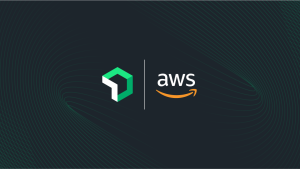Artificial intelligence (AI) has created amazing innovations, revolutionized industries, and changed how we all interact with technology. Today, almost every organization is adopting AI in some form. However, AI technologies like GenAI, which rely on Large Language Models (LLMs), are plagued by issues such as inaccuracies, bias, toxicity, and hallucinations, potentially harming AI users. The responsibility for addressing these issues and ensuring the responsible use of AI often falls on organizations. Yet, these challenges can be overshadowed by the significant complexity AI adds to organizations' tech stacks, where these problems might not always be a priority.
Setting a new direction for AI development and deployment.
On Oct. 30, 2023, almost a year since the debut of OpenAI’s ChatGPT, one of the most advanced language models ever created, the US government introduced the Executive Order on the Safe, Secure, and Trustworthy Development and Use of Artificial Intelligence, aimed at ensuring that AI is developed and used in a responsible and beneficial manner.
The Executive Order (EO) sets forth a clear vision for the future of AI in the United States, and it provides a roadmap for how the US federal government can work with the private sector and other stakeholders to achieve this vision. While AI benchmarks and regulations are still being established and will evolve, the auditing process for organizations looks to be complex.
Providing compliance metrics and meeting benchmarks will be difficult without visibility and insights on AI applications, especially since LLMs can often be black boxes treated like trade secrets by the companies that create them, compounded by the vast amount of data involved. Waiting for specific benchmarks and requirements to be clearly defined poses a huge risk. Organizations need to start gathering this data now by monitoring their AI applications alongside the rest of their tech stack.
In this context, practices like AI observability emerge as a crucial element to guide and support software organizations through the emerging regulatory landscape of AI. It provides the necessary tools and processes to ensure safety, transparency, and continuous improvements needed in AI systems, while offering visibility to meet new requirements as they are established.
A pivotal moment for safe, responsible use of AI
The EO represents a significant step forward in establishing tangible guardrails for using AI—a big shift from a fragmented approach where companies develop their own rules. It also calls for the National Institute of Standards and Technology (NIST) to create unified standards for safe, reliable, and ethical development of AI systems.
While the specific requirements are still emerging, the EO centers guidance on three core principles:
- Safety, security, and privacy: AI systems must be designed with safety and trust at their core. It calls for standards in the development and consumption of AI technologies, thorough testing, safeguards against misuse, and policies for critical applications.
- Transparency, accountability and responsible use: It emphasizes transparency and responsibility in AI operations. Large AI systems will be required to develop safety tests and report on critical building blocks—and all AI-generated content must be clearly labeled.
- Fairness and inclusion: The guidelines underscore the need for fairness and non-discrimination in AI systems. It calls for regular audits for bias. Also, systems need to ensure they cater to diverse user groups, and the use of AI as a tool for promoting equity.
What it all means for software companies.
For software companies developing AI-powered applications today, the AI EO serves as a clear call to action for adopting responsible practices for:
- Controlling the way AI systems data is collected and used, particularly in regard to training or fine-tuning AI foundational models.
- Ensuring no algorithmic discrimination in AI by tracking relevant metrics like prediction distribution or model drift.
- Adopting AI in a transparent, accountable, and bias-free way by getting visibility in model inputs, outputs, and decision-making processes that can provide a clearer understanding of how AI systems operate.
As more organizations adopt the use of AI to solve real-world problems, they must build a culture of compliance from the start. How? By implementing full visibility and control across the breadth and depth of the entire AI stack now, organizations can prepare themselves before data increases in size and complexity as models evolve, something that AI observability can provide.
Adopting observability for AI—stay a step ahead
Similar to how engineers use APM to monitor their application stack, AI observability practices provide the necessary visibility for not only performance and optimization but also for aligning with regulatory guidelines, building trust with users, and ensuring quality and accuracy. Here’s how:
- Proactive AI performance management: Observability helps optimize systems performance, and identify issues before they become problems. By regularly assessing how AI models perform in real-world scenarios, businesses can ensure that their AI applications consistently deliver accurate and reliable results to maintain a competitive edge.
- Safeguarding against AI risks: The complexity of AI systems brings inherent risks, from unintended biases in algorithms to potential application vulnerabilities that could be exploited. Robust monitoring and risk evaluation practices enable businesses to swiftly identify and prevent AI applications from being misused or hacked. By ensuring that AI systems are trustworthy and secure, companies can prevent potential harm to users—and damage to their reputation.
- Ensuring quality of AI systems: AI-powered applications are increasingly being used in decision-making processes. Using AI observability, businesses can easily detect any biases or discriminatory patterns in AI outputs, then quickly take action to fix quality problems such as bias, toxicity, and hallucination.
- Enhancing transparency: Providing stakeholders with insights into the workings of AI systems speeds the development of testing and evaluation practices to help document and demonstrate accountability. Beyond the emerging regulatory environment, providing transparency is a vital part of responsible use of AI.
Implementing robust AI observability practices is crucial for optimizing performance, ensuring safety, upholding ethical standards, and, of course, quickly and smoothly adapting to any upcoming regulatory changes.
What about the potential costs of AI compliance?
The AI EO calls for new obligations on companies—with potentially significant cost implications. Businesses could be required to disclose details about their operations, including the total compute power and clusters associated with their AI models. There’s also a heightened focus on ensuring the cybersecurity of AI models, which can add even more operational overhead. Companies must be mindful of their monitoring budgets as they strive to push the boundaries of AI innovation.
By providing in-depth insights into AI system operations, AI observability enables more informed decision-making regarding where and how to invest in compliance related initiatives. Organizations can then prioritize areas with the highest risks or potential for non-compliance as new regulatory frameworks emerge.
AI startups should feel confident but also start taking notice
The EO intentionally avoids targeting smaller players in the AI space by introducing specific recommendations for reporting requirements for AI models trained with substantial computing power and size, aiming to avoid stifling innovation. This means that companies just starting with AI can feel confident in deploying models and AI workflows today, as such thresholds are still subject to redefinition and, as written in the EO, only apply to a few large AI vendors.
However, AI startups should start thinking about optimizing models to avoid hitting reporting limits prematurely. What's more, innovators should not wait until their AI models grow in complexity before they start monitoring their stack. When specific thresholds are established by the Secretary of Commerce in the upcoming months and years, they should already have the necessary insights to ensure compliance and maintain a focus on accelerating innovation—and ultimately, success.
Top takeaways
- The first AI Executive Order establishes a comprehensive set of guidelines for the development and deployment of AI systems, marking a historic moment in AI regulation.
- Software companies should consider adopting observability practices as a proactive first step to ensure compliance, accelerate innovation and embrace the responsible use of AI.
- This is just the beginning of the AI regulatory conversation. For software companies developing AI-powered systems, it represents a call to action, necessitating practices like observability for a proactive approach to compliance.
A trusted partner in your AI journey
New Relic is committed to helping you navigate the new complexities of AI. Our all-in-one observability platform provides unparalleled visibility across the AI stack, ensuring your AI systems meet the highest standards of responsible use, safety, accountability, and transparency. With a legacy of innovation in APM and a deep understanding of AI, we offer proven expertise to guide you through the adoption of new innovations—and seize all of the possible opportunities in this new era of AI.
Discover how New Relic is revolutionizing AI monitoring for engineers. Click here to learn more.
The views expressed on this blog are those of the author and do not necessarily reflect the views of New Relic. Any solutions offered by the author are environment-specific and not part of the commercial solutions or support offered by New Relic. Please join us exclusively at the Explorers Hub (discuss.newrelic.com) for questions and support related to this blog post. This blog may contain links to content on third-party sites. By providing such links, New Relic does not adopt, guarantee, approve or endorse the information, views or products available on such sites.



